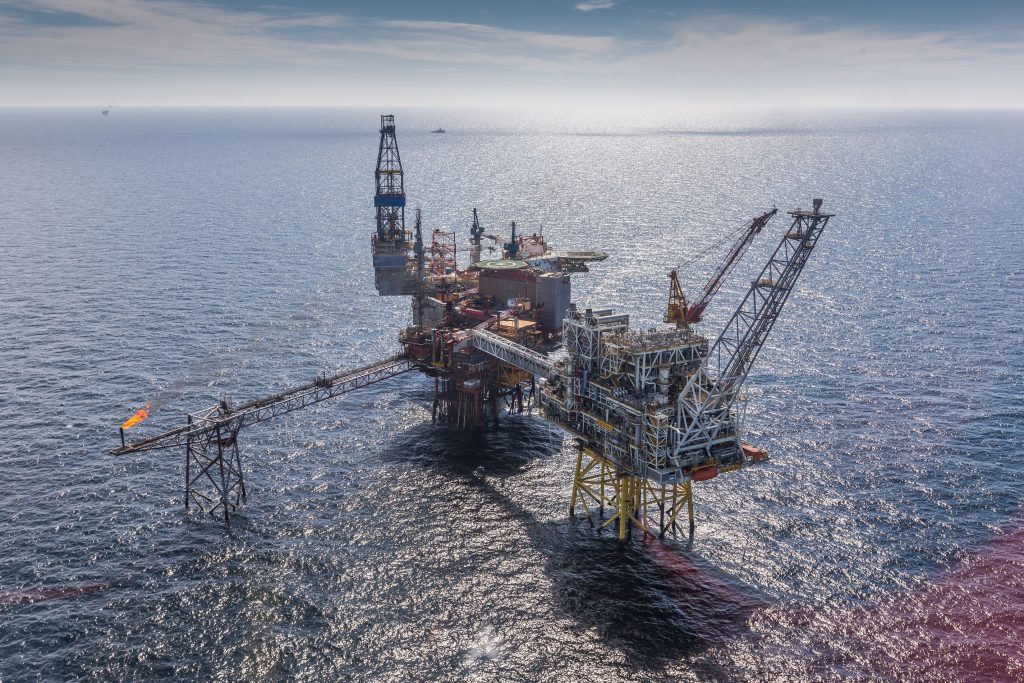
Repsol Sinopec Resources UK this morning confirmed it has successfully achieved first gas from its North Sea Cayley field.
Cayley is the third and final new discovery to be brought on stream during the redevelopment of the Montrose Area in the Central North Sea. It follows Godwin and Shaw, which were brought on stream in 2015 and May 2017.
Total production from the North Sea trio is expected to peak at 40,000 barrels of oil equivalent per day (boepd).
Brian Winton, general manager for Montrose and Arbroath said: “Safe and successful delivery of these fields is a great achievement for Repsol Sinopec and underlines the transformation of our business. With the support of our shareholders and our partner Marubeni we have overcome significant technical and legacy challenges to safely maximise economic recovery from these historic fields and facilities. We can now look forward to hub production from Montrose for another 15 years.”
The first gas celebration comes just days after Enquest successfully achieved first oil for its flagship Kraken development, which has a 25 year lifespan
The Montrose Area Redevelopment (MAR) encompasses the development of three new fields – Godwin, Cayley and Shaw – and a new bridge-linked production platform (BLP) connected to the Montrose Alpha to provide additional process and plant support facilities.
The Godwin field has already been developed via an extended reach well from the Arbroath platform. The Cayley and Shaw fields have been developed as subsea tie-backs to the BLP. The project overall is expected to unlock up to 100 million boe of additional production, including through life extension of legacy fields.
The Montrose Area, comprising the Montrose, Arbroath, Arkwright, Brechin, Carnoustie, Wood, Godwin, Shaw and Cayley fields, is located in blocks 22/17, 22/18, 22/22 and 22/23, 200km east of Aberdeen.
Arbroath was the first oil field to be discovered in any sector of the UK North Sea in 1969, but wasn’t made commercial viable until 1990. By contrast, the Montrose field was brought on stream 40 years ago.
The MAR redevelopment has helped push back production cessation. Field abandonment was originally expected to begin in 2017, according to Jon Seedhouse, subsurface manager for Montrose and Arbroath.
He added: “About a third of the 100 million barrels that the project is projected to yield relate to life extension of the existing fields. When we sanctioned the project back in 2012, the expectation for field abandonment was that we’d be winding down by 2017 – about now – but with this new investment we are able to keep things going for longer. Maximising economic recovery is as much about getting as much as possible out of the existing fields as it is about developing the new ones.
“This works in a couple of ways. First, our operating cost per barrel for the complex comes down to a level where we can justify keeping it going for longer. Second, we improve production efficiency for these older fields: for many years production has been relying on gas compression on Montrose which has not been as reliable as we’d have liked. A lot of the older fields are producing at high water cuts so you need that gas to supplement the energy from the reservoir, and we now have new gas compression on the BLP to facilitate that.
“More reliable power generation will also contribute to better production efficiency and we have installed new generation capacity on the BLP. Cayley is a gas condensate field, which helps us in both respects as we can use that gas for power and for lifting the high water cut wells, as well as for export.”
Repsol Sinopec Resources UK Limited is the operator with a working interest of 58.97%, and Marubeni Oil & Gas (U.K.) Limited is the sole partner.
Repsol Sinopec Resources UK has interests in 49 fields, of which it operates 40, on the UK Continental Shelf, with 12 offshore installations and two onshore terminals.
Recommended for you
